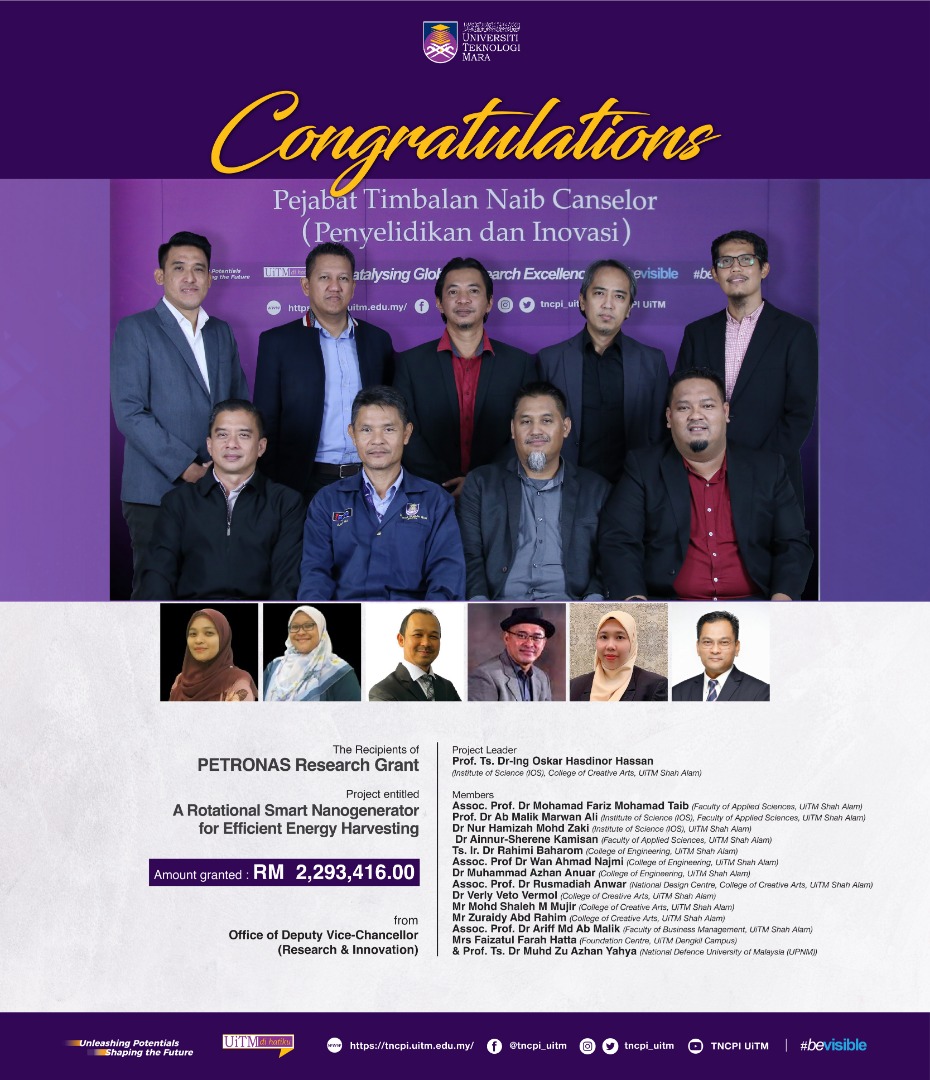
The advancement of renewable energy sources is one of the most critical challenges due to the exponential growth in industries and the ever-increasing demand for fossil fuel consumption. Wind energy harvesting is one of the most sustainable and clean power sources. However, they have numerous drawbacks, such as complicated fabrication, inconstant electricity production, and limited construction and location. Furthermore, the traditional wind turbines are not working at low wind speeds, which is the main challenge in Malaysia.
Multiple approaches have been carried out to overcome the disadvantages of wind turbines, which led to the application of nanogenerators as wind energy harvesters by utilising triboelectric and piezoelectric effects. The nanogenerators show significant promise as a next-generation wind energy harvesters.
“A triboelectric nanogenerator (TENG) is a crucial energy-generating mechanism due to its straightforward ease of design, input-sensitive output, and high-power density.”- Professor Oskar of Institute of Science (IoS) and College of Creative Arts, UiTM.
TENG converts mechanical movements such as rotation to electrical energy through contact electrification between two triboelectric materials and the electrostatic induction effect.
A fully funded project by PETRONAS Research worth more than RM2 million explores the rotational (R-TENG) smart nanogenerator for enhancing the efficiency of energy harvesting. The outcomes of the project potentially pave the way to commercialise the idea and expected to cater to the growing TENGs market at a compound annual growth rate (CAGR) of 48.55% during the forecast period to reach a market price of US$133.119 million in 2025, compared to US$18.543 million in 2019.
Congratulations to the UiTM team!
#UiTM
#keluargaUiTM
#TNCPIUiTM
#bevisible
